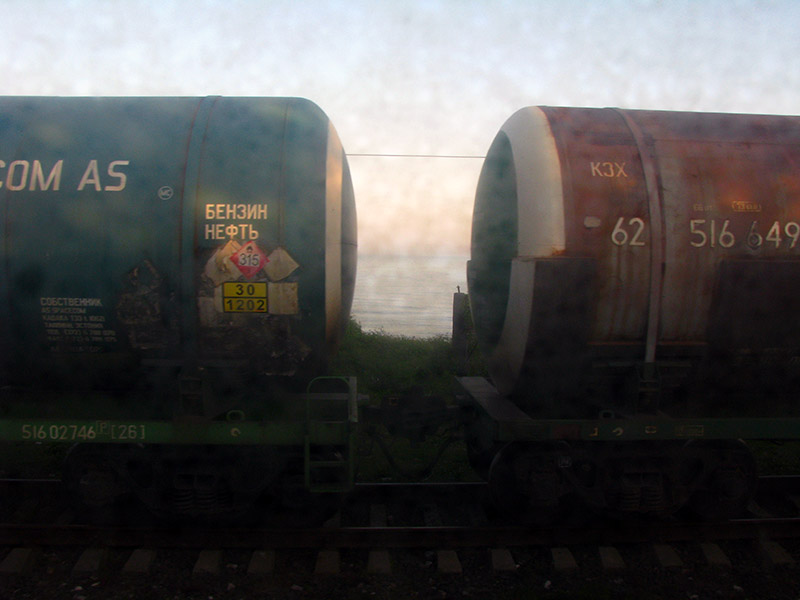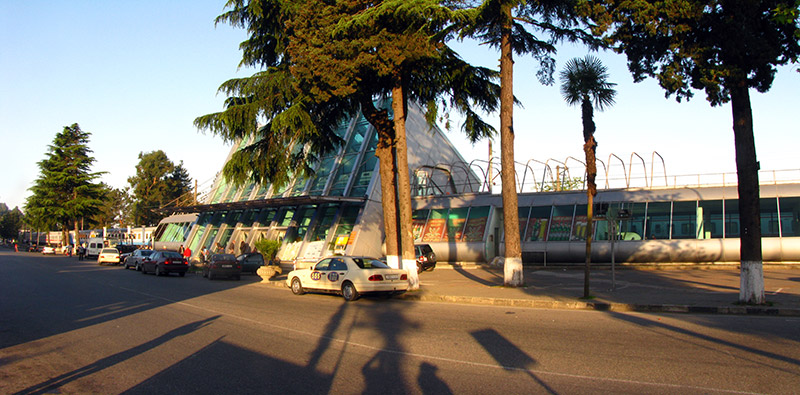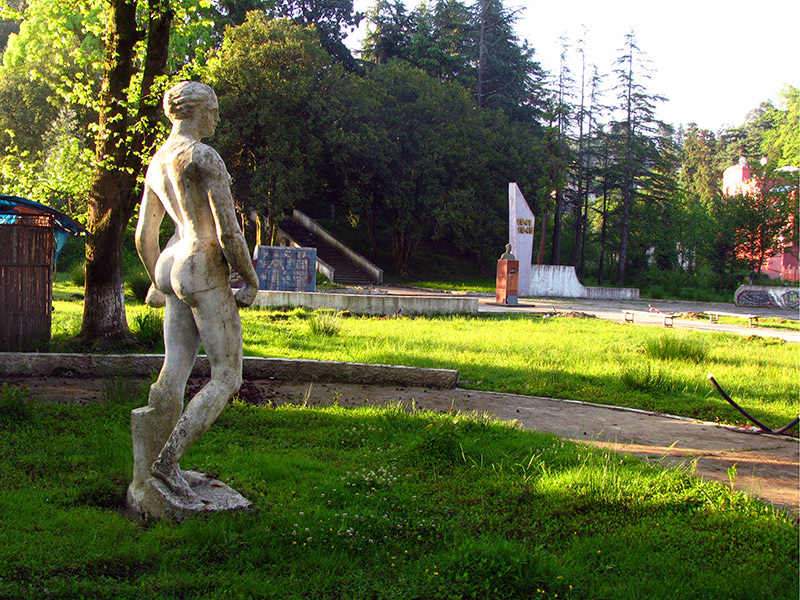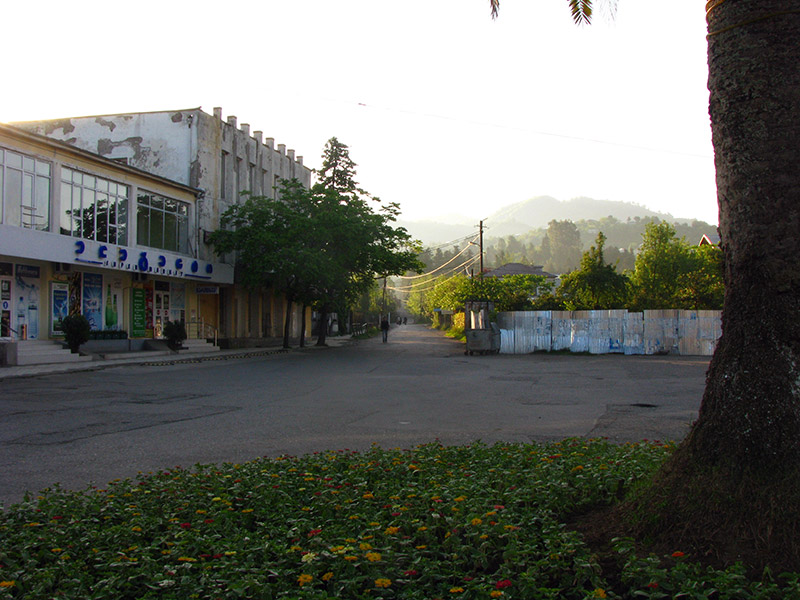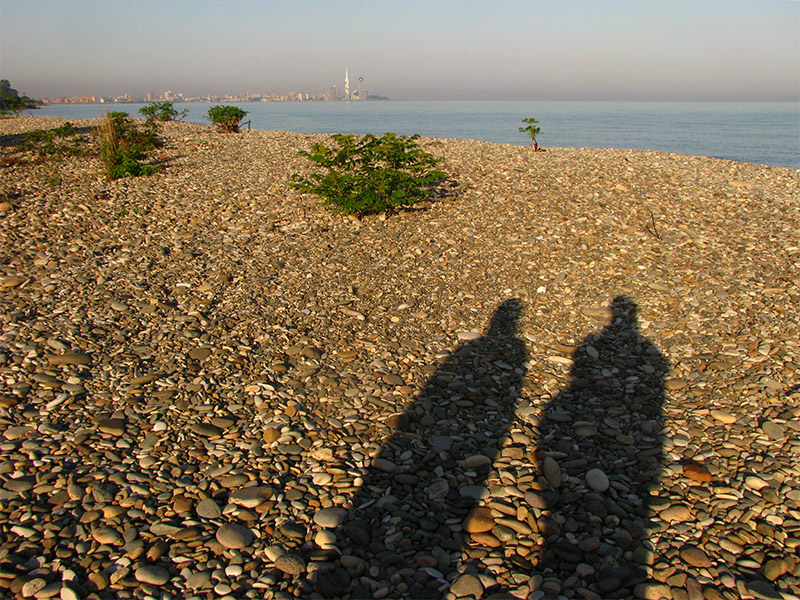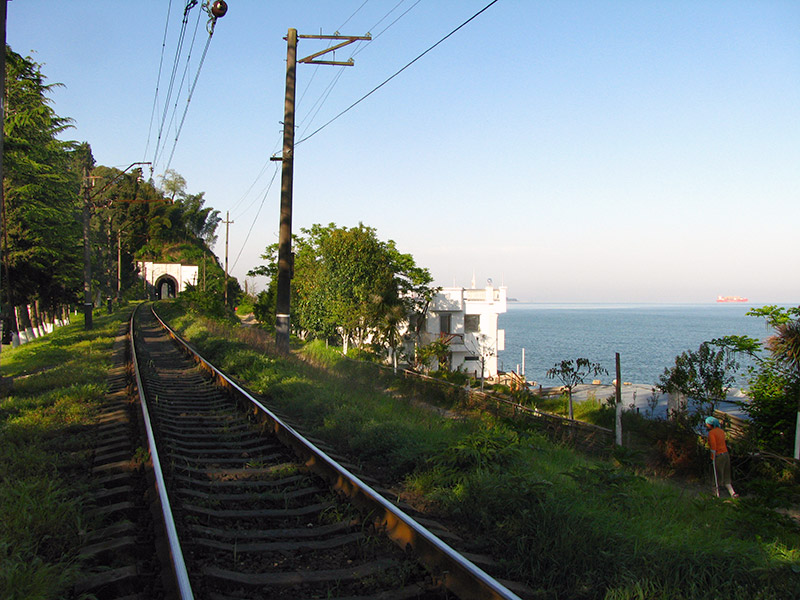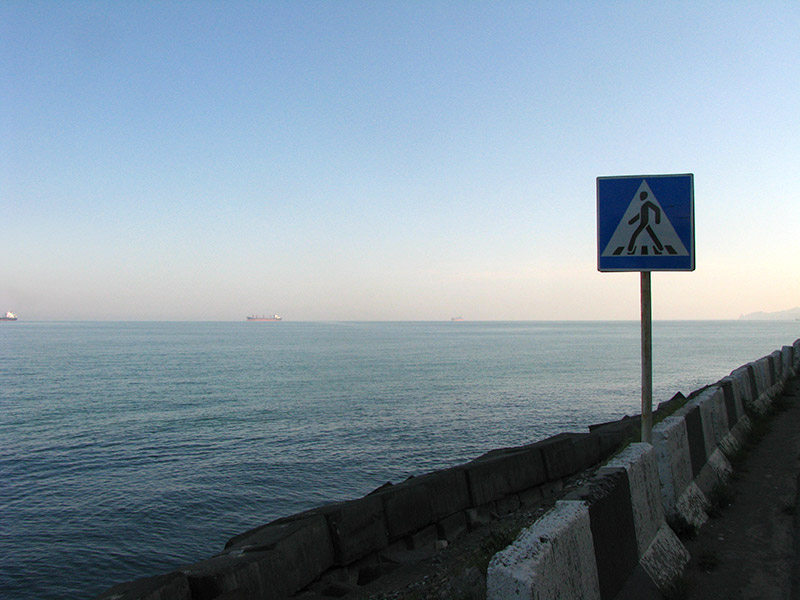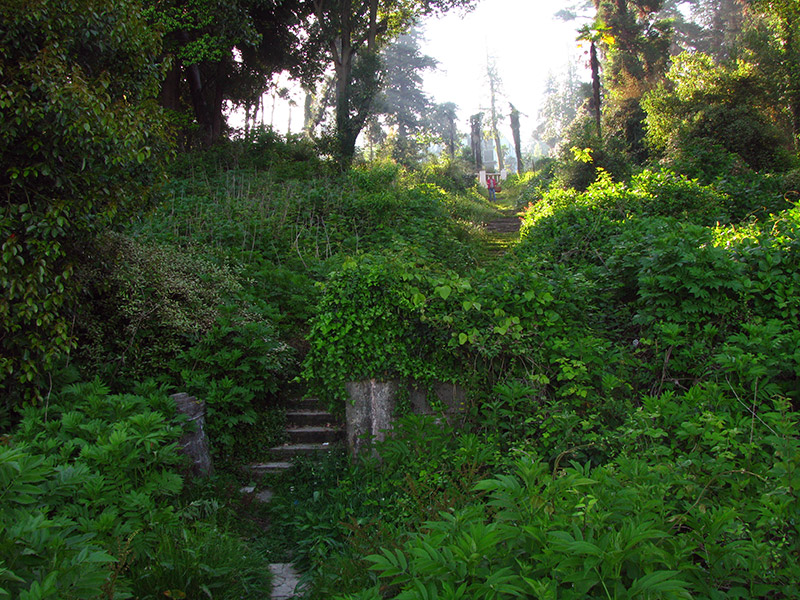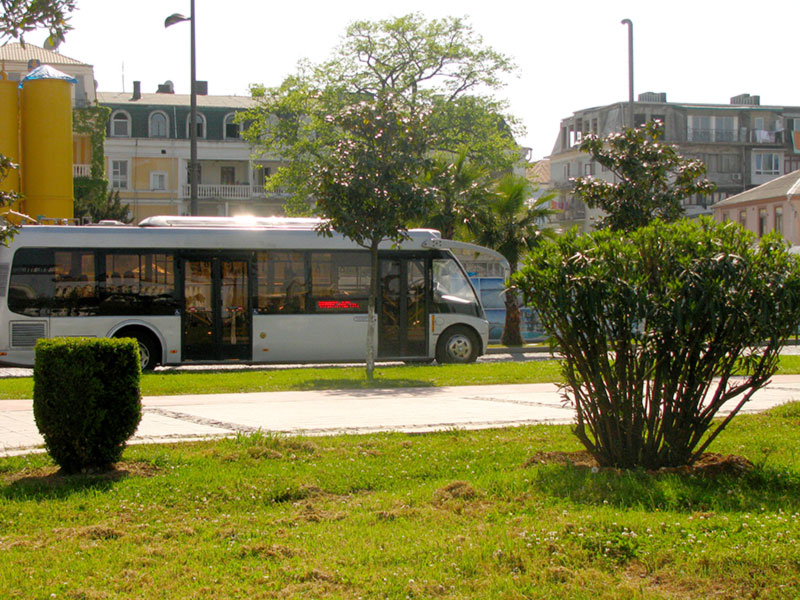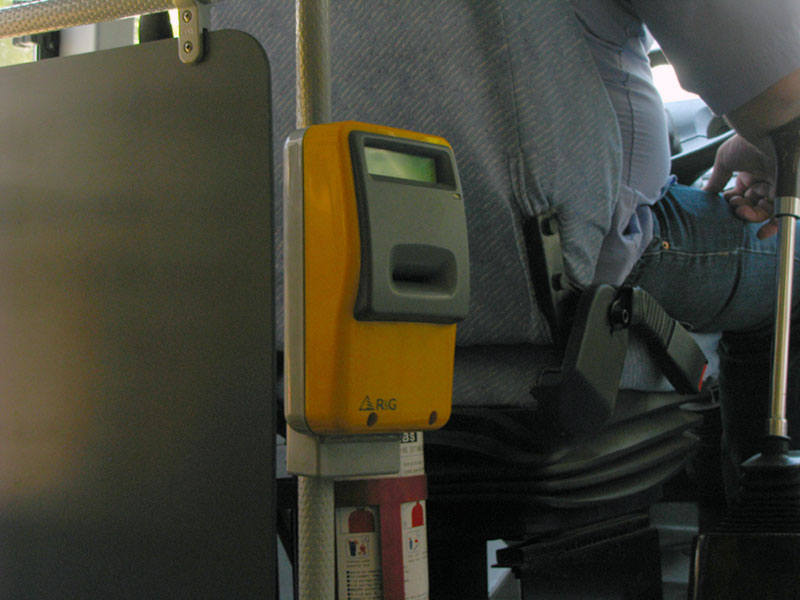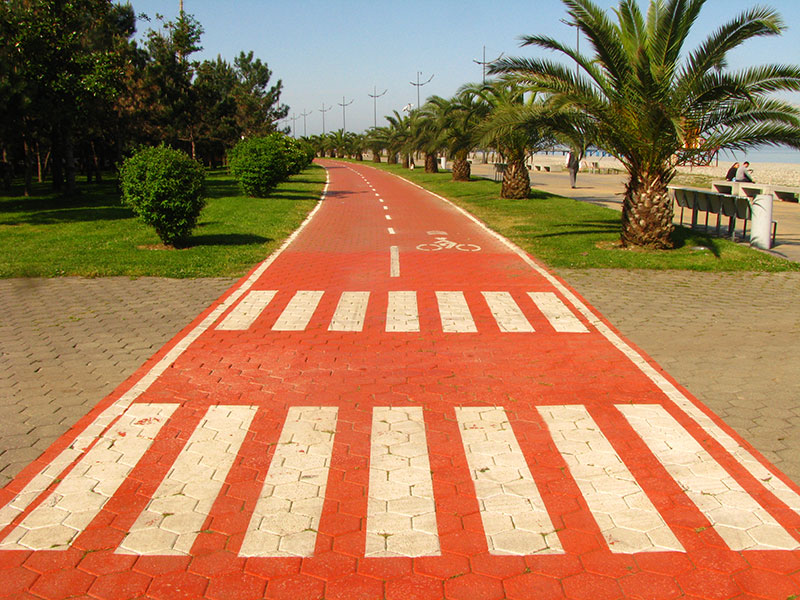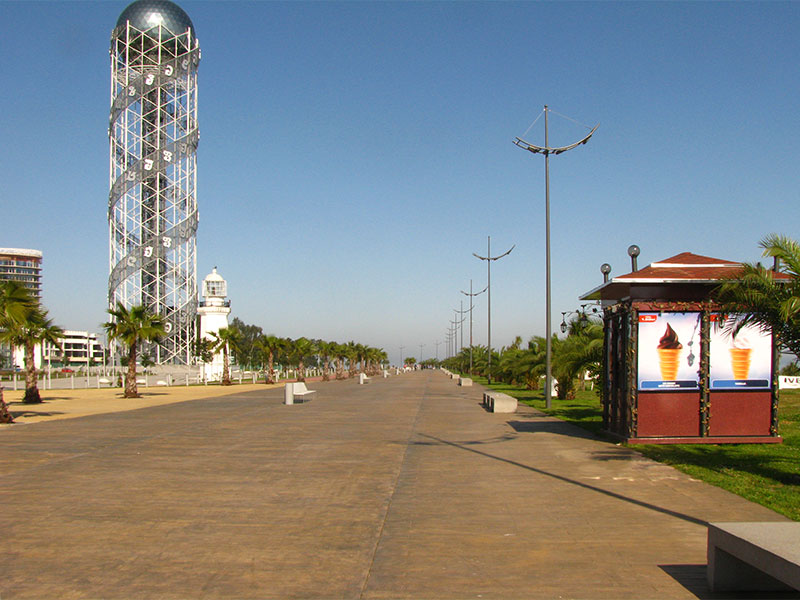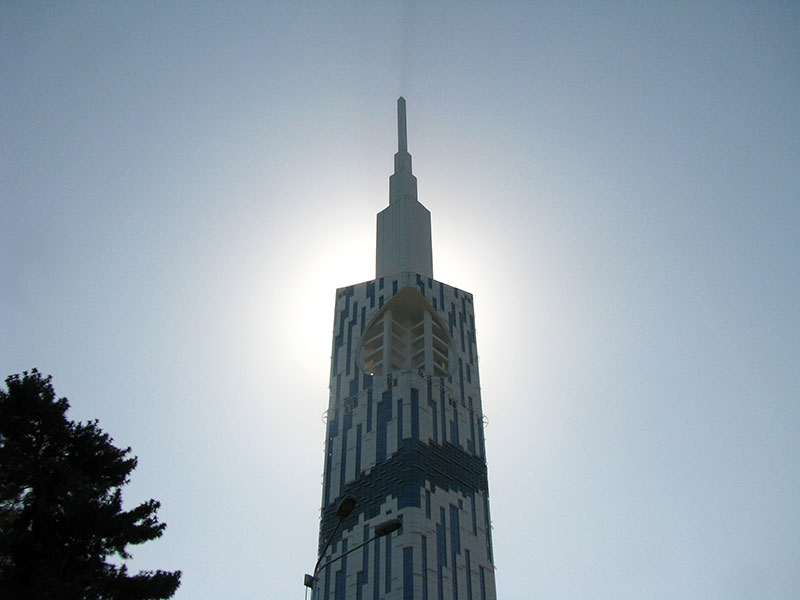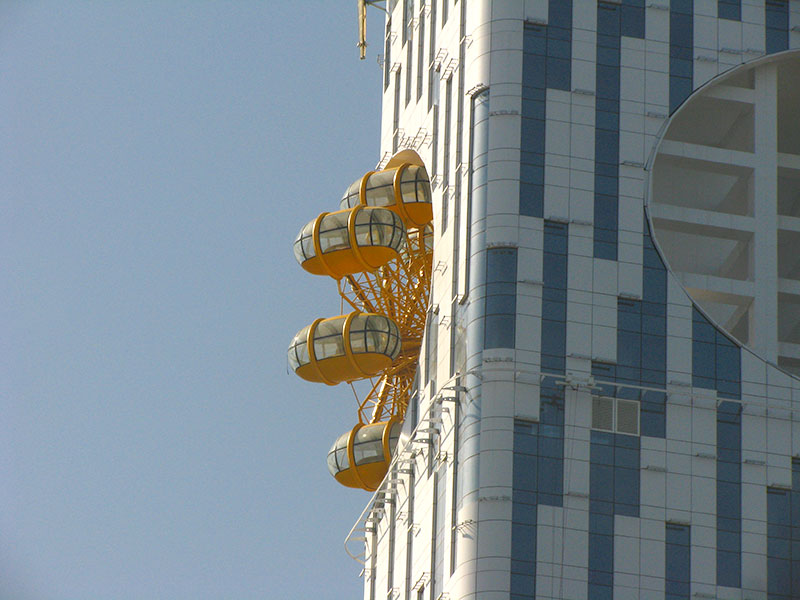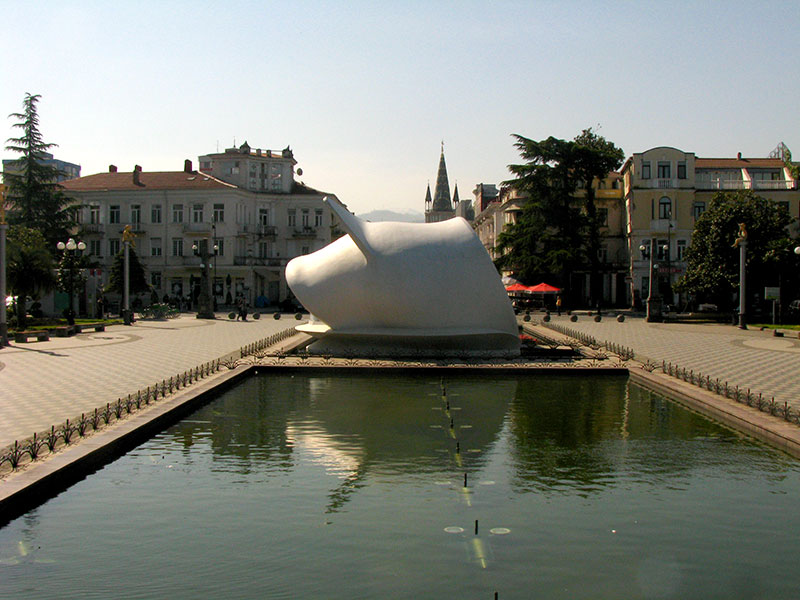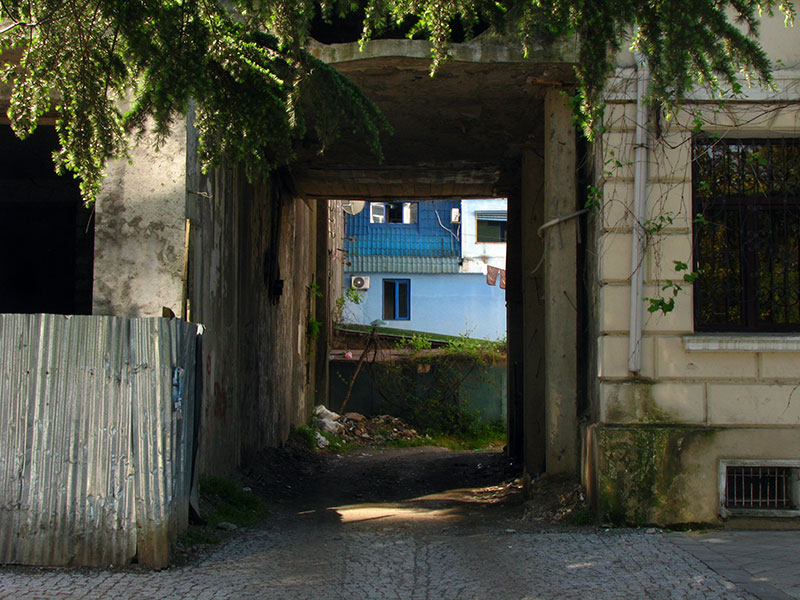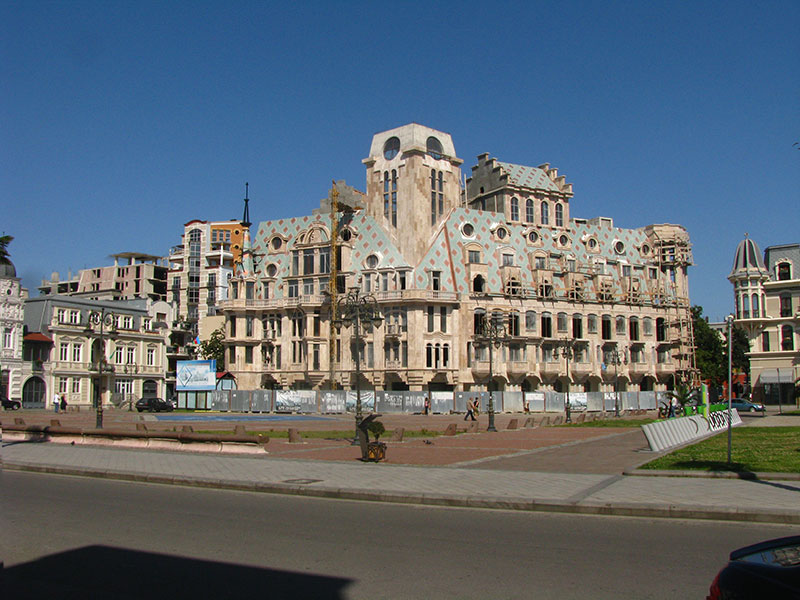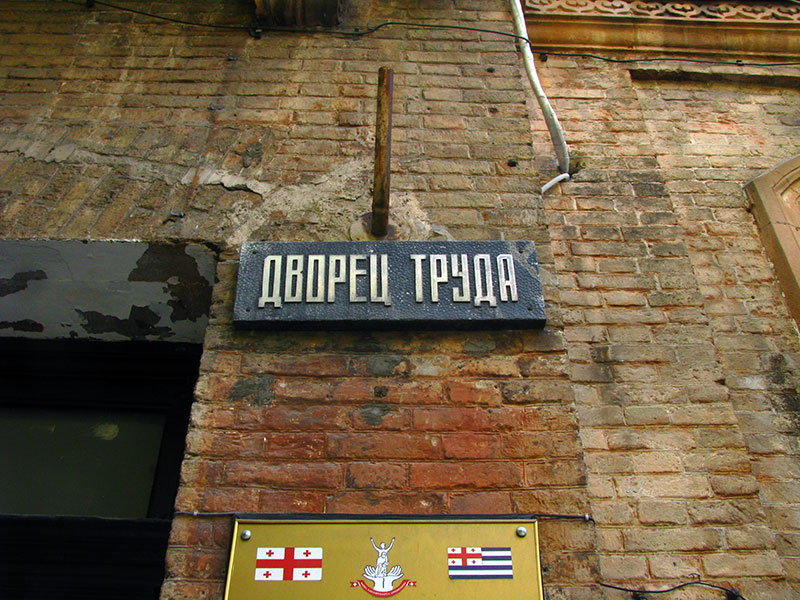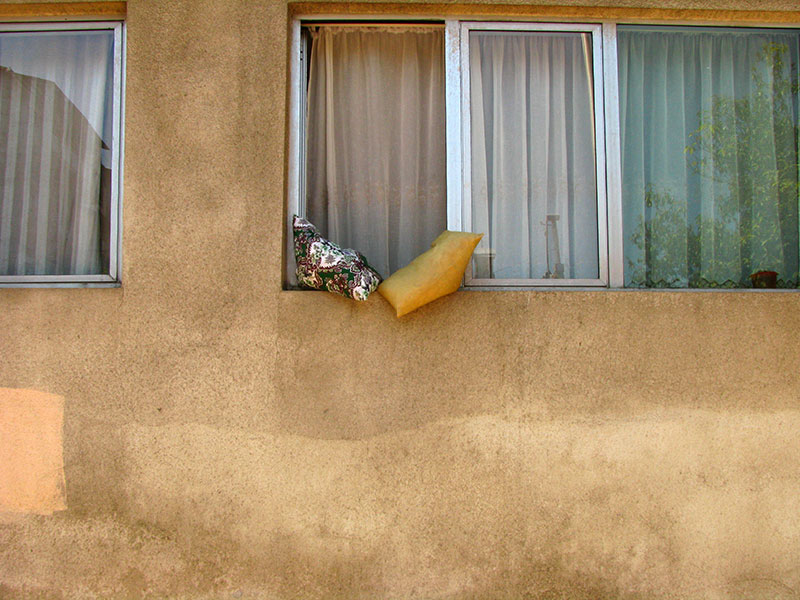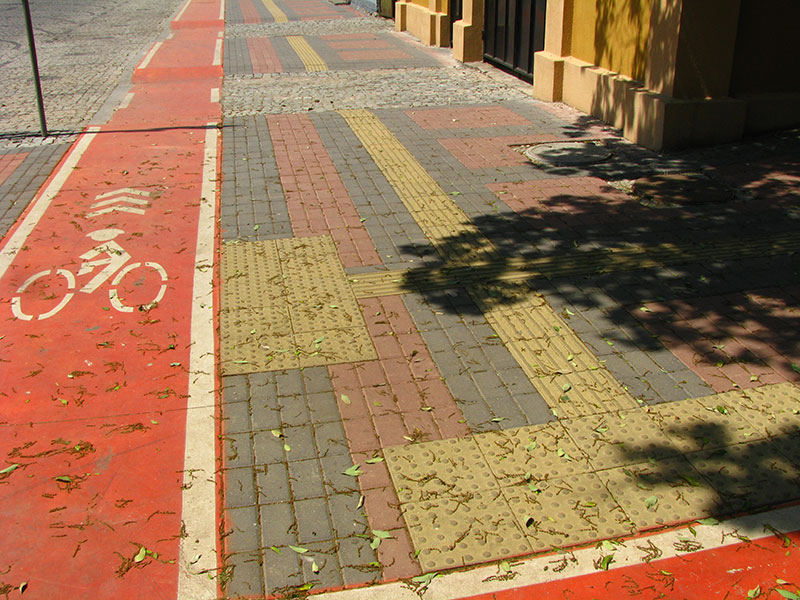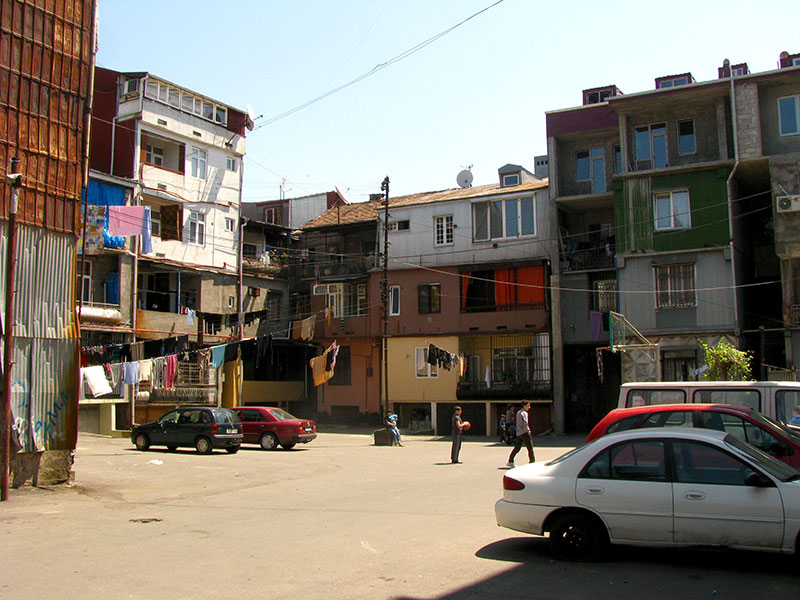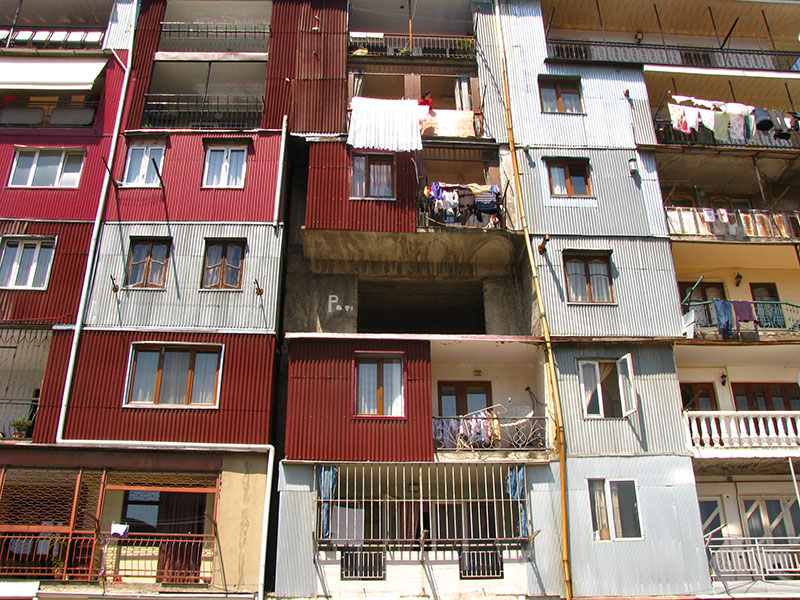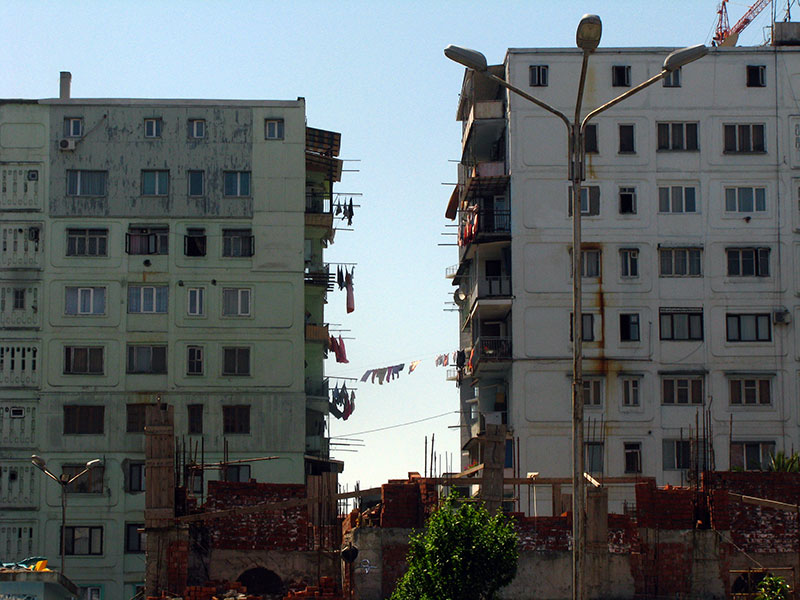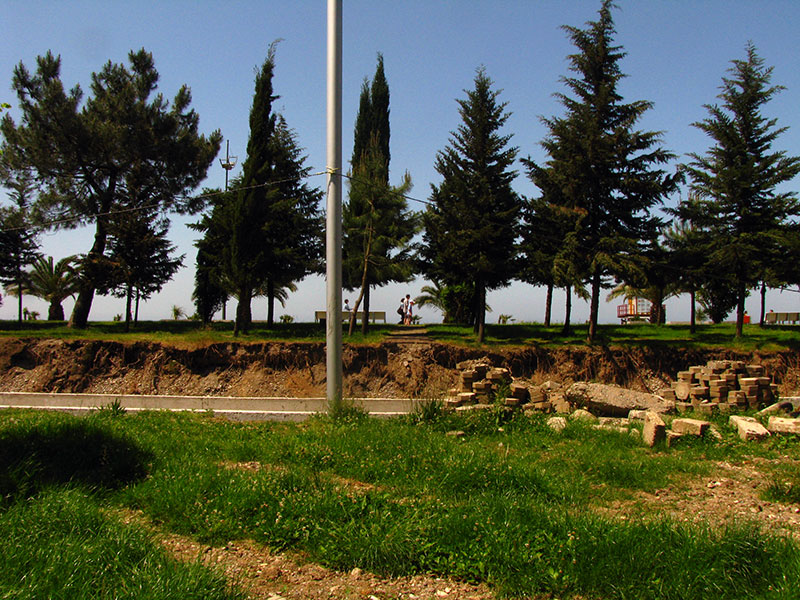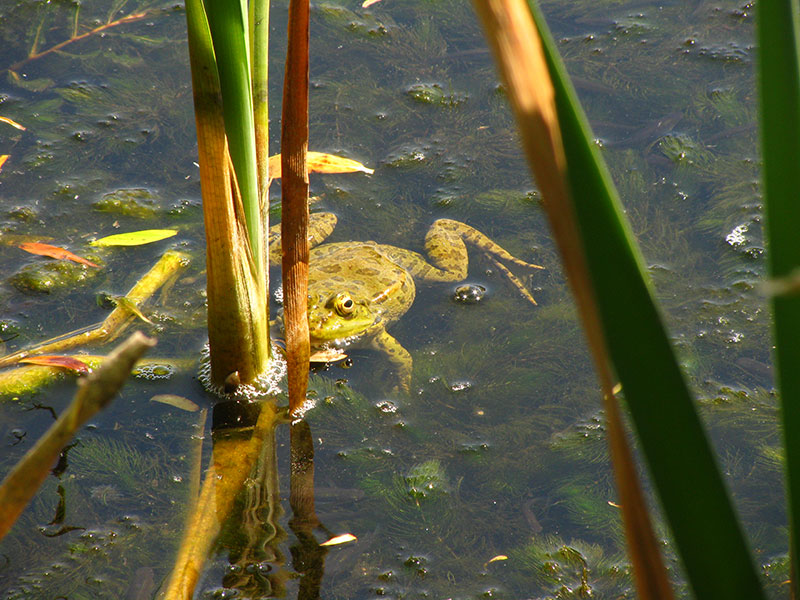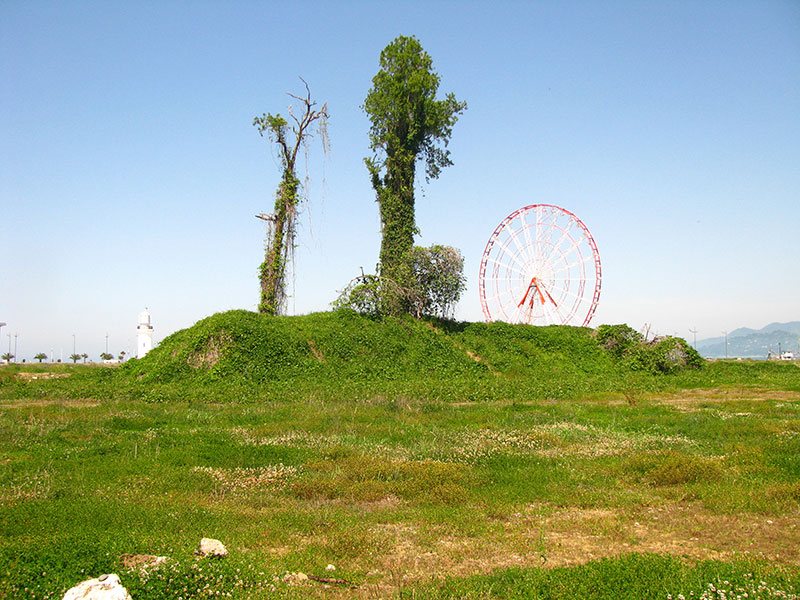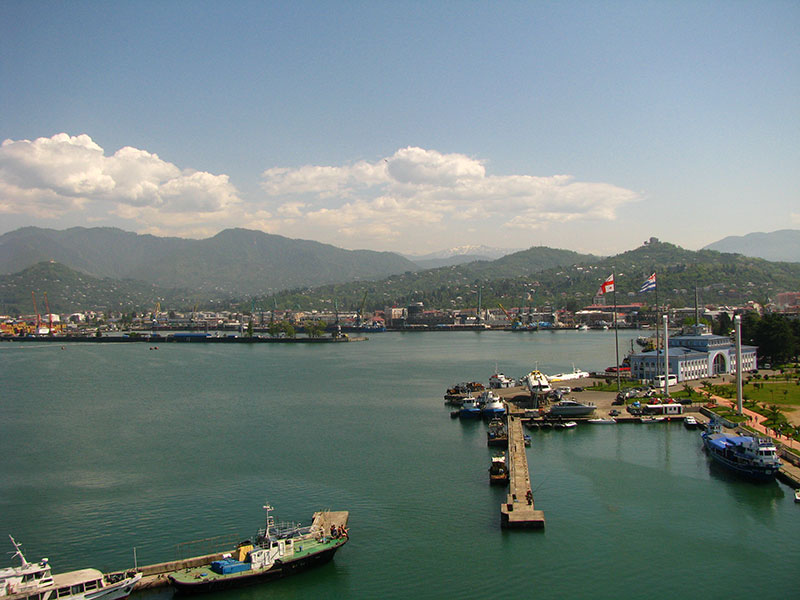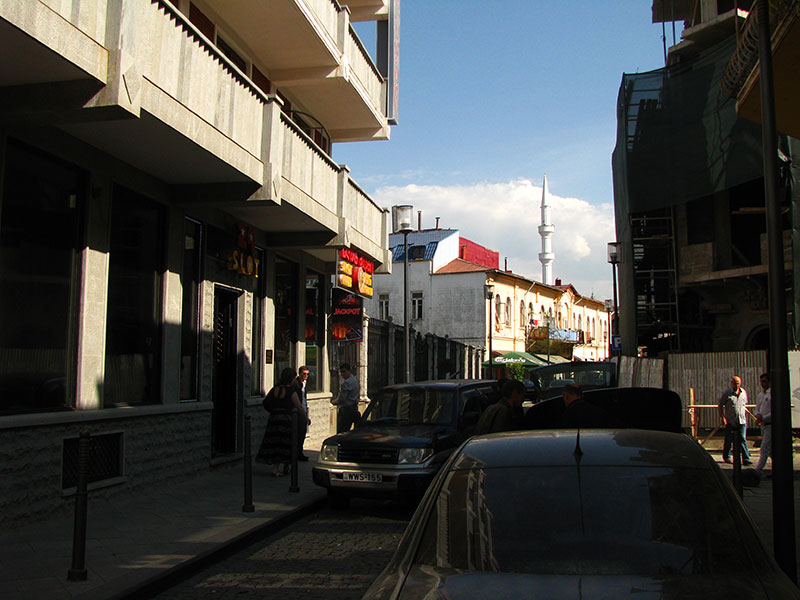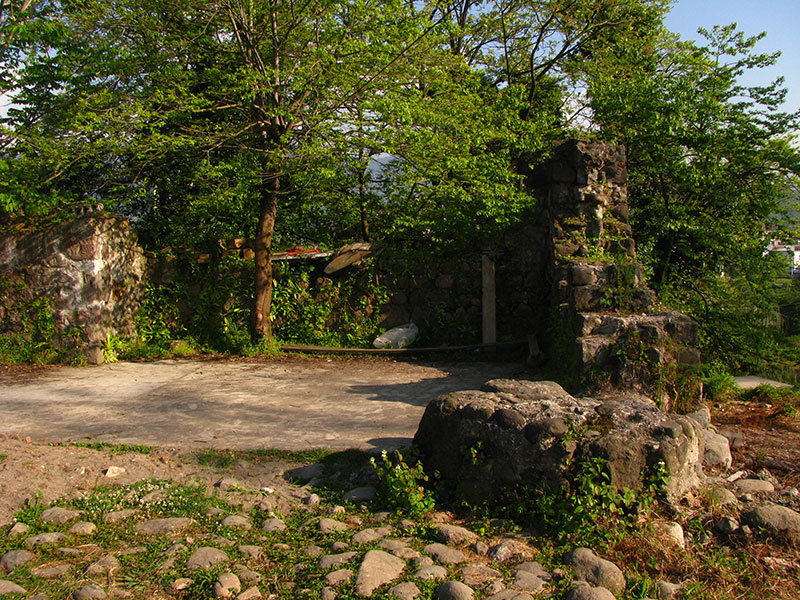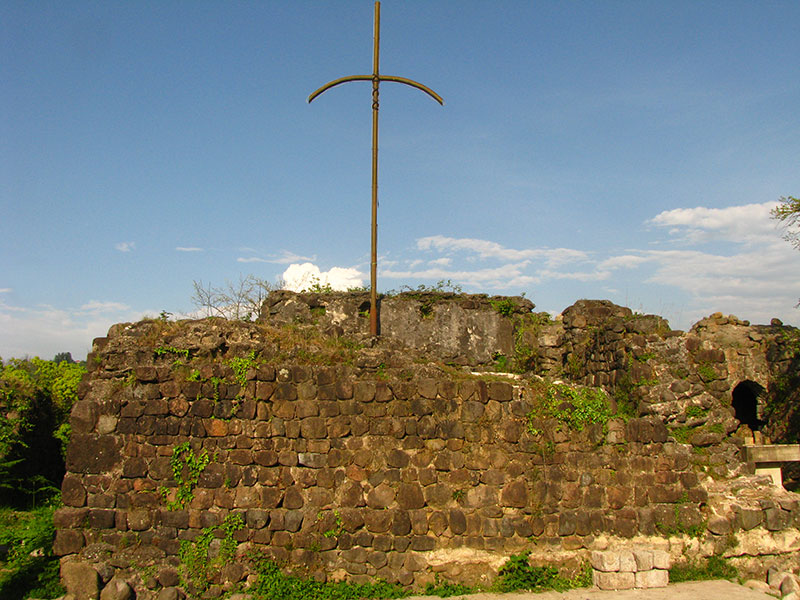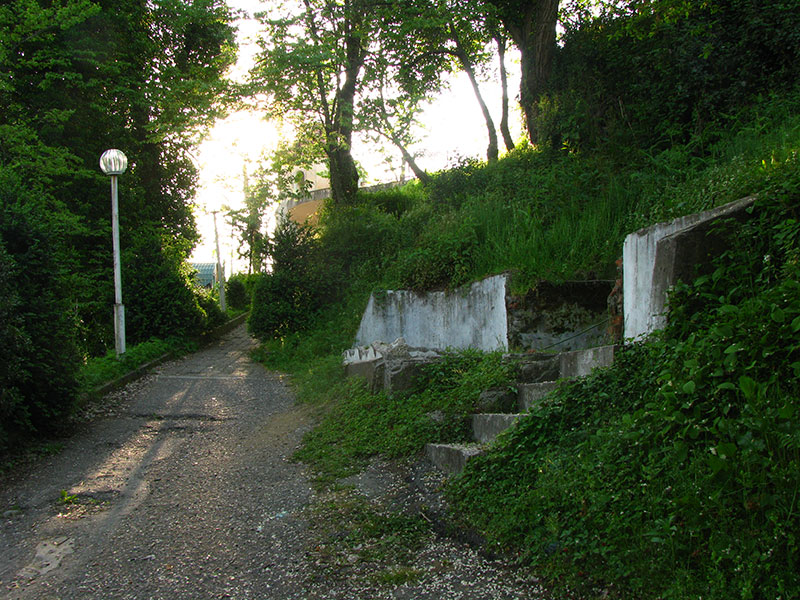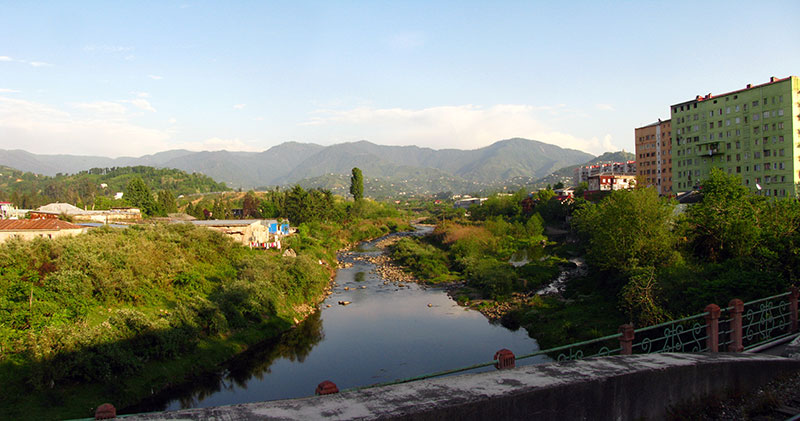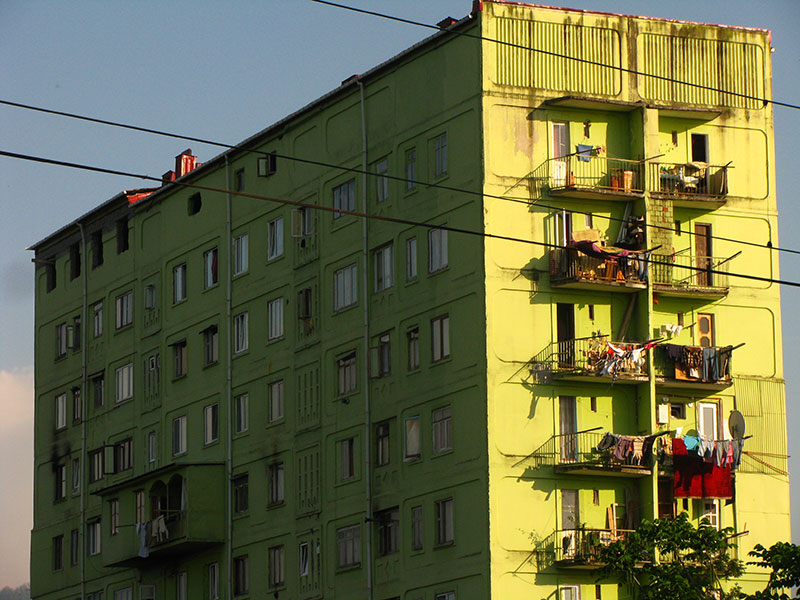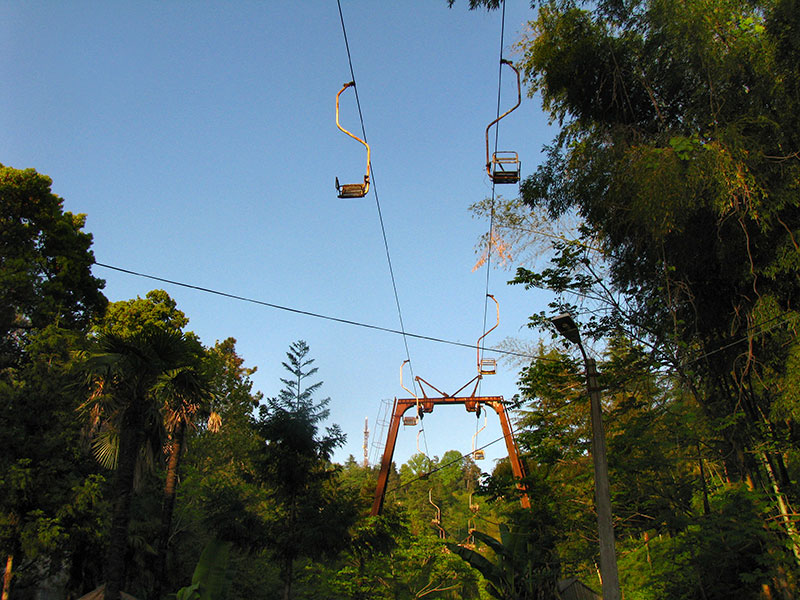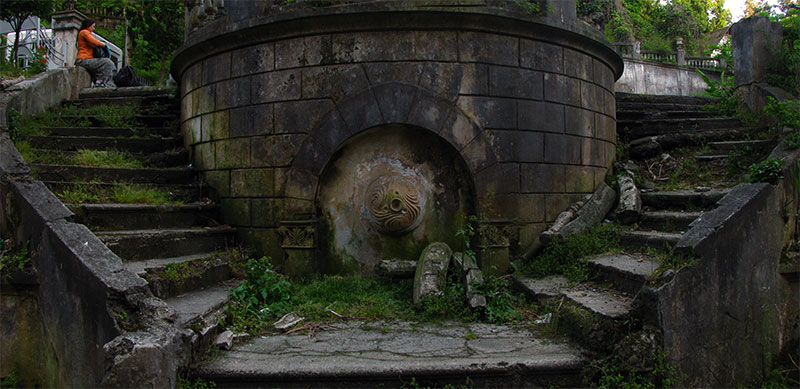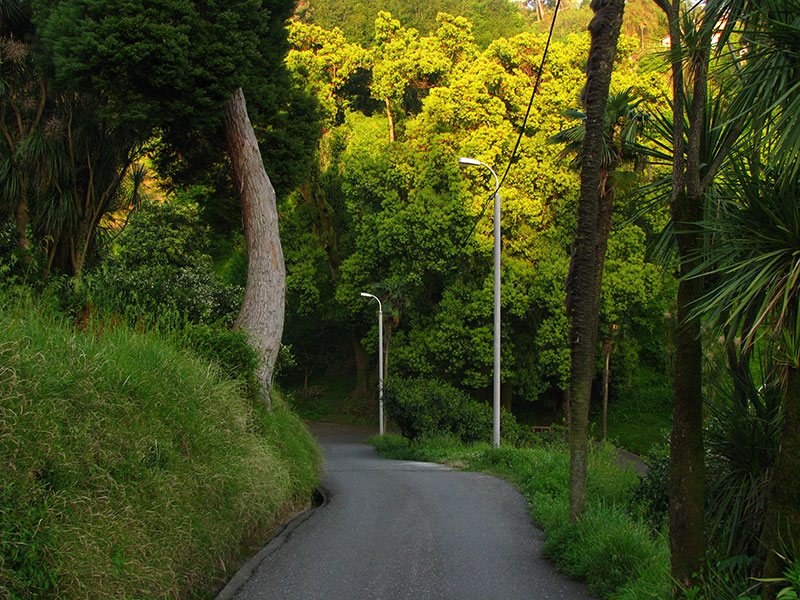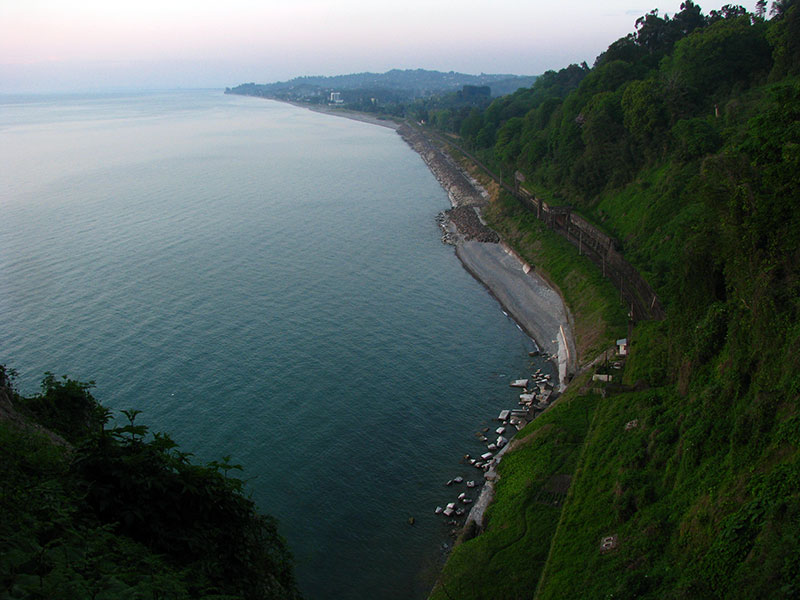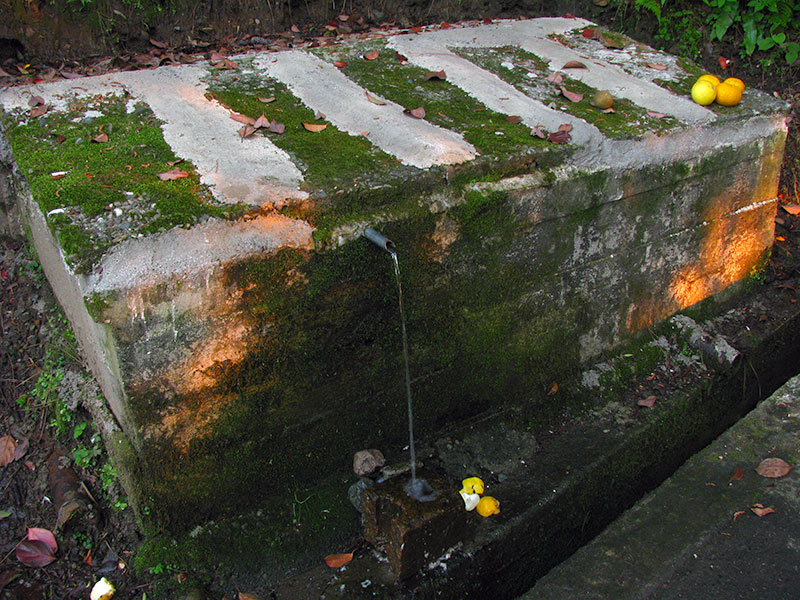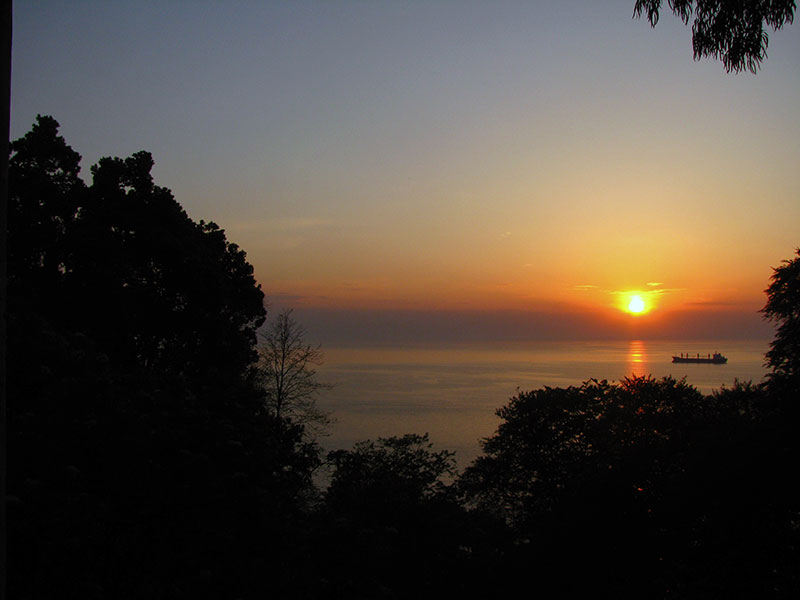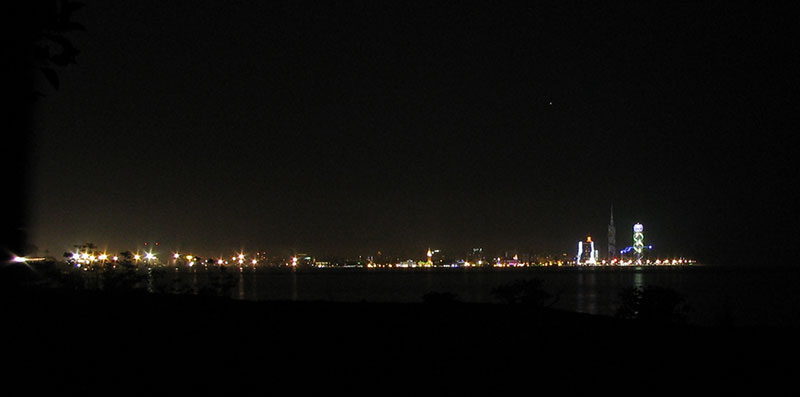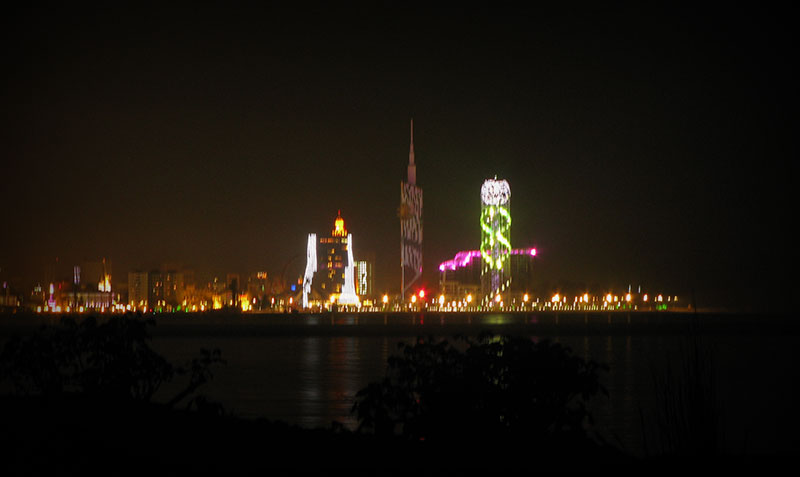This was our one day in Batumi. During this warm day, we've managed to see some of the Makhinjauri suburb near the train station, the city center, some ruins named after queen Tamara, and the extraordinarily beautiful botanical garden.
When arriving to Batumi by train, passengers see the Black Sea so close, that probably waves can reach the rails during storms. Here is the Black Sea seen between two oil cisterns and through the dirty window of our train. The flow of transit trains carrying oil from Azerbaijan here doesn't stop. This photo was taken near Chakvi, which is second to last station on the way to Batumi.
We had no problem buying same day tickets to the Tbilisi — Batumi train. The train went conveniently during the nighttime, and its last stop was not in Batumi itself, but in the Makhinjauri suburb, which has become a part of Batumi.
Upon arriving, we stepped into the cold morning and started our way to the center of Batumi. A decision was made to walk until we decide to board some passing public transport. We passed near a decaying 1941—1945 park at the foot of some hotel's territory.
Not much of Makhinjauri can be seen from this seaside main road. People were living there — to where little foggy side streets went.
Diverged slightly to a big beach of little rocks on the Black Sea's shore. We could see the central part of Batumi from here, with some strange buildings.
The train did not go further, but the rails continued. There is a train station closer to the city center, but it is more for industrial and cargo needs. Georgia is not some dull flatland: even if the road went almost touching the sea, it still required tunnels to be cut.
It looks like the tunnel was built by subway builders — there's an «M» logo of the Tbilisi metro centered over the tunnel; the letter is similar to the one in Moscow.
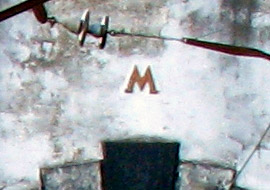
Things combine here in a way that is unusual for us flatlanders, like this pedestrian crossing sign near the sea edge. Batumi seemed to be a busy port — the sea horizon was populated with cargo ships waiting in line to enter the port.
It was here where we decided to continue in public transit. I wanted to climb these bushy stairs but the bus came so soon that I didn't have the time.
The city bought its buses from somewhere, could be from China. Buses were silver and grey. Nice electronic information panels were present on bus stops. Central bus stop signs were tidy, in contrast to those on the outskirts. Latin transcriptions were present, but not very often. Learn the Georgian alphabet!
A bus stop sign in the city center.
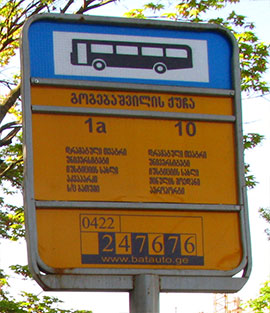
I used public transport twice during this day. Buying a ticket was simple — I gave 40 tetri to the bus driver, he gave me the ticket and even stuck it into the controlling device himself. The controlling device printed some info on my ticket.
We reached the center and headed towards these high building we saw earlier from that beach. There was a giant, salmon-colored bicycle path. Bikes could be rented using plastic cards.
The quay was paved with wood, which was very pleasant for bare feet. The tower thing on the left is called «the DNA of Georgia» — and it is the alphabet spiralling upwards.
This tall building is a technical university. I did not expect this — thought it could be a hotel of some worldwide brand. The university was yet to be opened.
This university building came complete with a scary ferris wheel inbuilt into it 100 meters above the quay.
This thing looks like a pig's head, doesn't it? It is a pumping station.
The quay is nice, but we had to see the real city itself, too. We turned our backs to the sea and dove into a random street.
This building brought up the thoughts of some fairytale, but the construction fence reminded about the reality.
Palace of labor. This could be an official, more native translation of «business center».
Locals put pillows into window frames to rest their elbows on while smoking, talking and watching the fast life flowing by changing directions randomly.
Cycling paths, markings for the blind. This was a bit too much, we were not used to this level of civilization!
Real living houses did not have any cosmetics abundant in the tourist center.
This building looked like having been given to the owners without even minor finishing jobs — not even handrails were seen on the balconies. People did their best on their own.
Washed clothes was drying between two buildings, resembling the connecting tissue. As if the buildings started to become one.
We found the end of the improved part of the quay.
We met two locals, who wanted to talk to us. The first one had the name Tariel, and the next one was Fridon. It was an interesting coincidence with the order of appearance of characters in the Shota Rustaveli's epic The Knight in the Panther's Skin. Our Tariel was drunk and insisted on buying us a street khachapuri from an elderly female maker who was passing by. Fridon was sober, and missed five buses that he was waiting for because of talking to us. Fridon told us that the Nurigeli pond sucked as a tourist destination; we checked, and he was right.
There were frogs, who looked shocked by the speed of Batumi's renovation for tourists.
Boarded the bus again — to go back to the quay and visit the ferris wheel near the port, which opened as late as at 13:00 — so that the visitors get the most out of the summer heat up there. We passed an untouched place that hinted at what was here before the modernization and the wood pavement. Someone gladly used these bushes to cool off a bit in its shadows.
The ferris wheel costed 2 laris for one visitor. Something could be seen from it indeed: the passenger seaport (was closed during our visit), and mountains — many of them. They started here, at the sea, and did not end anywhere before the horizon. The snowy ridge far away are Karçal Mountains (Turkish: Karçal dağları), having 3350 meters above the sea. These are in Turkey, and they were 45 kilometers from the ferris wheel as a bird flies.
We did swim a bit here, on May, 4th, 2013 — our first time that year — watching ships entering the port, emitting large plumes of black smoke. Not wasting a lot of time, we continued to see the city. Stumbled upon a muslim district around a mosque. We saw the Iraqi people who were passengers on the same train with us here.
Our next destination was the Tamara's fortress, which was listed as a tourist destination on Wikipedia, without having an own article about it, as well as no location attached. We decided to talk to the locals about it. If no one knew it, then we'd skipped it.
— Hello! Do you know where the Tamara's fortress is? — Tamara? No, sorry, we don't have such a coworker.
— Hi. Could you please direct us to the Tamara's fortress? — No, but... Dato, come over here! — Tamara's fortress? It is near Benzi district, I know the place. I can get you tere by car, I need to go that way myself. — How much? — Money? Well, no money needed.
Dato brought us to the Tamara's fortress in his car, for free. I doubt he had something to do there.
There was a stairway going up that abandoned hill. We climbed to the top, and found an orthodox christian church near some ruins. I do not even know whether it was a fortress or something belonging to any Tamaras of the world. Well, the georgians love naming all kinds of stuff after queen Tamara.
Suddenly, four young people appeared. These appeared to be christians who were making sure that we do not vandalize anything. They were pretty talkative. Their leader had ukrainian roots, and he was very interested in the level of orthodox faith in Ukraine and the rate of premarital «stuff» in our country. We decided to tell them the truth, which was that we are both atheists. We had no problem with them, they weren't aggressive at all. It seemed that these people were thinking exclusively about the christian stuff.
They told us that the ruins did not belong to Tamara and was named after her only because she passed nearby once. We've met such naming principle before, in other countries.
Christian crosses have their upper horizontal bars curved downwards.
We had a time talking politics, thieves and such with the last of the four to lose interest in us. Then we descended from the hill using its other side, complete with steps and an old road. Tiny red dots in bottom right corner of the photo are free, not tasty strawberries.
Our orthodox friends did not know the name of the nearby river. OpenStreetMap came to the resque — it is called Korolistskali. There were two bridges crossing it here — railroad and a road for cars. Prokudin-Gorskiy, a popular photographer of the past, was here with his camera. Here is a view of Korolistskali river from the railroad bridge:
Someone lives here, on polluted shores of Korolistskali. In just 200 meters, the river has its mouth in the Black Sea.
It was time for us to visit the botanical garden. We achieved this with the help of a marshrutka bus № 31. The garden sat on a severely beautiful place called Mtsvane Kontskhi, which means «Green Cape». It was already beautiful at the bus stop, further improving after the ticket desk. There was an abandoned ropeway hanging over us.
The botanical garden in Batumi can be reached by buses 31 (to the lower entrance) and 40 (to the upper).
Beautiful mossy stairway to the nice railway platform nearby, despite the train stops some 100 meters away. It is possible that the botanical garden can be reached by a suburban train.
The ticket cost was 6 laris. You can add 3 more for transportation by an electric car which we did not. It meant that we chose to gain elevation. It is a hilly place in a hilly country.
The place is magnificent — with various plants of unusual forms, and powerful viewpoints of the Black Sea, framed with all kinds of plant silhouettes.
I left the other party resting at a viewpoint after gaining the elevation took its toll on her, and ran wherever I could, in order to see more. There were some citrus fruits available for free near a water fountain, grown at this very place. They tasted like a hybrid between a lemon and a grapefruit (hybrids of hybrids, yeah).
I ran back, witnessing the sunset from the high cliffs.
Our time in Batumi was running out. Tired, we got to the train station somehow.
Some time was remaining before the train, so we went to the beach from the beginning of this story and saw the Batumi center with night illumination. DNA tower was green. Ferris wheel did not have any lights. The university did not have its own, but reflected the light coming from other sources.
The train turned out to be the same one that brought us here in the morning.
